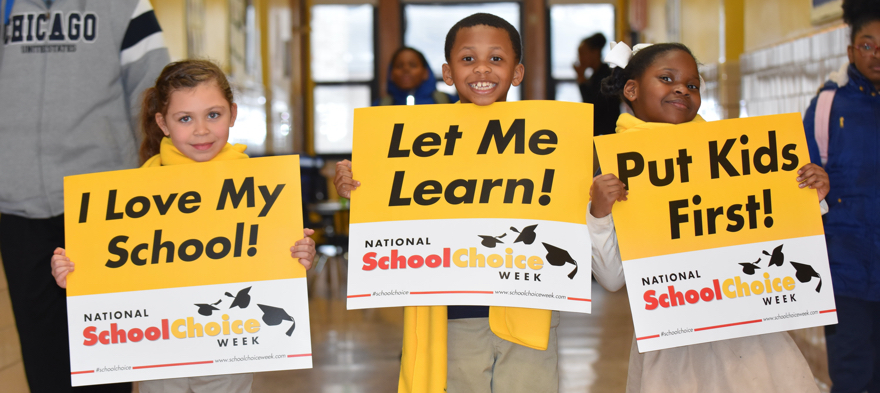
Jan 30, 2020 12:00:00 AM
As public charter school teachers, we’ve heard a surprising number of myths and misunderstandings about charter schools. North Carolina offers an array of educational choices—including traditional public schools, charter schools, magnet schools, private schools, virtual schools and homeschooling. But unleashing the power of these options starts with clearing up the confusion.
National School Choice Week is the perfect time to revisit what charter schools are designed for—innovation—and why many North Carolina families choose them.
Public charter schools offer value in the public school landscape by providing smaller, targeted academic programs. Often, a charter crafts a curriculum geared toward meeting a specific, underserved need in the community. And charter schools enjoy extra freedom to innovate within their specialized focus.
Because they have a more customized feel, sometimes charter schools are confused with private schools. But charter schools are public and tuition-free. In fact, we would love to see charter schools’ innovations better utilized through strong partnerships with district schools.
Public charters are sometimes painted as a "big bad wolf" that steals funds or cherrypicks public school students. In reality, the question should not be, “What are charters taking away from traditional schools?” Instead we should ask, [pullquote]“What are charters giving to families that they can’t get at their base school, and how can charters share innovations with traditional schools?”[/pullquote]
Charter schools’ flexibility allows them to provide opportunities that children otherwise could not afford or access. Courtney works at The Capitol Encore Academy in Fayetteville, where families flock to the charter school because it is one of only a few schools in the community with an arts-integrated curriculum. The charter school she worked at previously provided low-income minority families a rigorous college-prep education not available in neighborhood schools.
Deb works at The Exploris School, which uses its downtown Raleigh location to powerfully connect kids to community. The small size and student-to-teacher ratio make it easy to head to Jones Street to meet with legislators, stroll to Walnut Creek to study stream health or work on an urban gardening program to feed the homeless. These are activities it might be possible for district schools to do too, but the charter setting increases teachers’ flexibility and makes it easy for them to provide students unique experiences.
For us, one of the most exciting aspects of teaching in charter schools has been the opportunity to amplify teachers’ voices in the decision-making process. With fewer layers of administration, the people with boots on the ground are easily heard. The structure of charter schools provides many opportunities for teacher leadership and rewards experimentation.
The small size and localized control in charter schools makes it easy to adapt to changing needs in a student population. A local county school is like a big luxury liner—it may offer more levels of service, but it is much slower to turn around.
Charters are more like sailboats—built for specific purposes and easier to make quick turns. The concept of public charters as laboratories for educational innovation—where techniques can be tried, improved upon and shared with other public schools—makes for a rising tide that can lift the entire educational community.
All of our public schools—traditional, charter and magnet—are important resources for families. [pullquote]It’s time to dispel charter school myths and celebrate all schools that increase student opportunity and help teachers innovate.[/pullquote]
Courtney Samuelson is a doctoral student in literacy at North Carolina State University. She was formerly the MTSS director and a fifth grade teacher at The Capitol Encore Academy. Courtney was the 2018 Burroughs-Wellcome Fund North Carolina Charter School Teacher of the Year.
Few issues in education spark more tension and debate than standardized testing. Are they a tool for equity or a burden on students? A necessary check on school systems or a flawed measure of...
Charter schools are public schools with a purpose. Operating independently from traditional school districts, they're tuition-free, open to all students, and publicly funded—but with more flexibility...
Despite the benefits of a diverse teaching force, prospective teachers of color fall out of our leaky preparation pipeline at every stage: preparation, hiring, induction, and retention. Here’s what...
Ed Post is the flagship website platform of brightbeam, a 501(c3) network of education activists and influencers demanding a better education and a brighter future for every child.
© 2020-2025 brightbeam. All rights reserved.
Leave a Comment